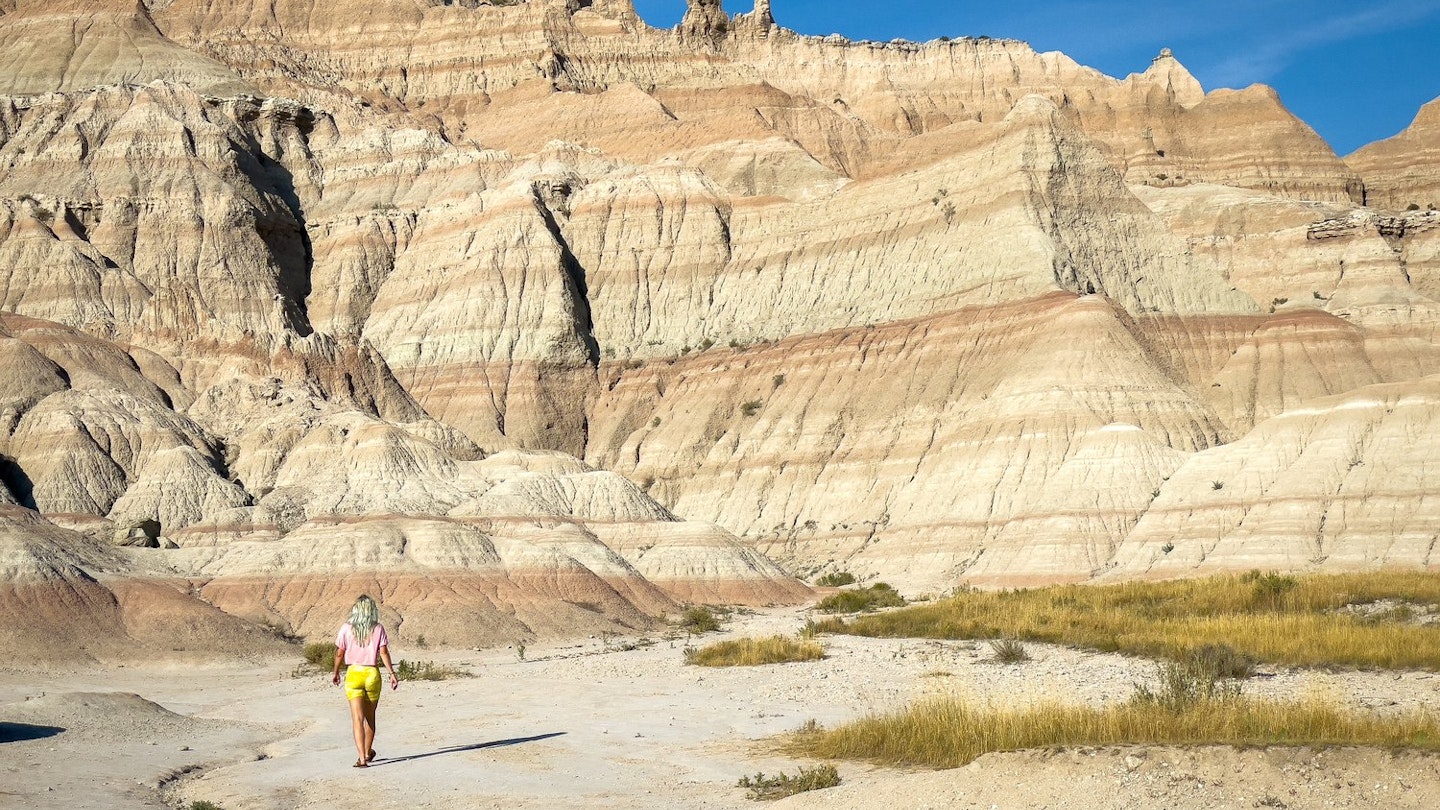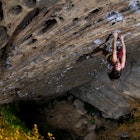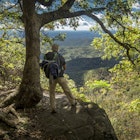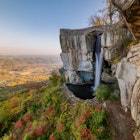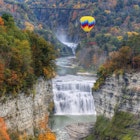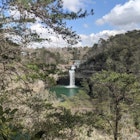For many of us, outdoor adventure feels out of reach. We think we don’t know enough or that we don’t have the right gear – we’re scared of putting ourselves out there and making mistakes.
I’m here to tell you: the road to adventures under the open sky is paved with inconveniences and errors. Lots of them. And encountering them doesn’t make you any less of an adventurer – it actually makes you a certifiable badass. Here's how to push past your fears and come out smiling on the other side.
I made the leap and you can too
Fun fact: I’m writing this article next to my fire while solo camping, my only company are the fireflies whizzing by in the darkness like jaunty little spaceships and the occasional bullfrog. Traveling – and especially camping – alone as a woman is becoming more common (yay!), but many folks still tell me: “I could never do that.”

I wasn’t an “outside kid” in the adventure-y sense: my flavor of outdoor activity looked more like recreational soccer games and summer afternoons at the neighborhood pool. This trend continued into my adulthood and into my travel career – I loved writing about art and culture around the world, but outdoor adventure still felt like a far-away thing reserved for folks way more savvy and intrepid than myself.
Then I was invited on a trip to Chilean Patagonia that pretty much changed my life. It was a very tough 5-day guided trek through rugged terrain – I was usually to be found at the rear of the group but dang it, I did it. That trek showed me what I was capable of and I became determined to do it on my own when I got home. Soon after, I seized upon a Memorial Day sale on camping gear and headed to the woods.
I started small, booking short stays at campgrounds close to home, eventually gathering the courage to travel the American West solo for three weeks. I explored landscapes I had only ever seen pictures of, places that literally made me weep with wonder – all almost entirely alone. After that, I was irrevocably and entirely addicted to outdoor adventure.
But things have not always been smooth sailing. I’ve messed up, done dumb things, and just been plain scared. Just to be clear, I’m not advocating jumping into the deep end without doing any prep work (that sh*t is dangerous!), but I wanted to share a few of those stories with you to humanize outdoor adventure a bit – we don’t all have to be rugged men with six packs who’ve been rock climbing since childhood, and sometimes things don’t go according to plan. But Mother Nature is here for us no matter how we arrive at her doorstep and learning how to navigate her realm isn’t as impossible as it can sometimes feel.
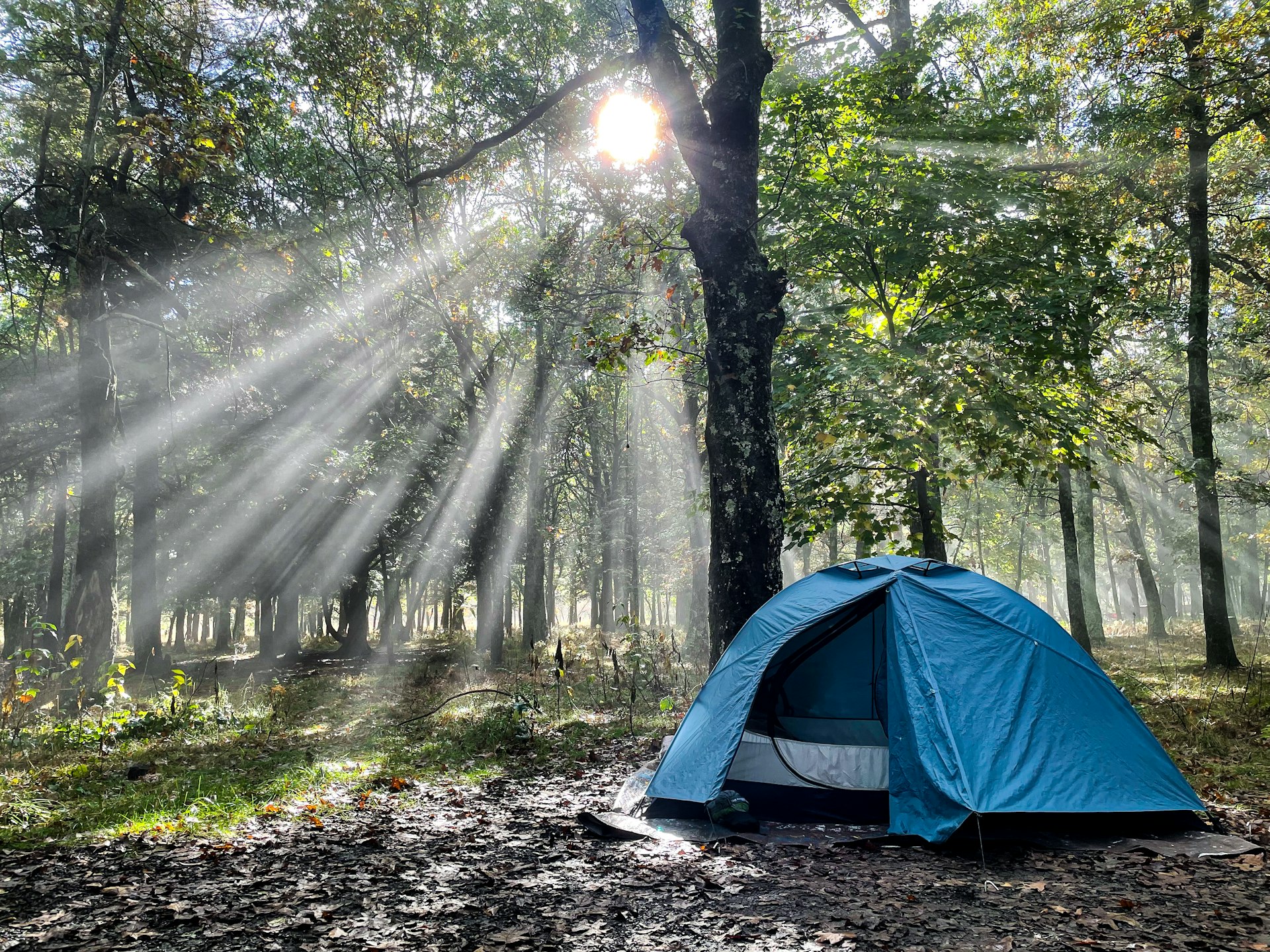
Conquering fear in the Shenandoah haze
The fog was a velvety blanket that enveloped Skyline Drive, a road (ironically, at this moment) known to have some of the best views east of the Mississippi. My husband and I gawked as the clouds slowly closed in around our car.
“Real question: did we die and we just don’t know it yet?” he chuckled, half-kidding. I laughed nervously as we slowly weaved along the ridge to our campground, the famous Big Meadows in Shenandoah National Park. When I booked our site several months prior, I thought myself clever – the tent spots are tightly packed save a smattering of sites set away in the woods encircling the campground, and I managed to score the one furthest away from everyone else, a taste of solitude while still maintaining access to amenities like restrooms and water spigots.
The fog cleared long enough for us to set up our tent, our things dampening as the moist air wrapped over us. Soon we sat enshrouded in opaque darkness that not only drowned out the light from any other campers but also the sound. It was a silent, lightless cocoon, not an ideal scenario when we had been repeatedly warned that Shenandoah’s higher-than-average bear population frequented the campground.
It may sound silly to hardcore adventurers – especially since we weren’t technically alone in the wilderness – but we were spooked. The absence of stimuli was uncanny and we could only manage fitful sleep thanks to bear paranoia; we wouldn’t be able to hear them if they approached.
Groggy-eyed, we awoke to more fog – a bit lighter, but still a present, silent specter. Though our mood was less than chipper, we packed our bags and headed to the trail we had planned to see, one that dug down deep into the valleys and circled back over steep ridgelines.

As we put one boot in front of the other, the fog slowly morphed into something different. It lost its foreboding edge and playfully danced down waterfalls and through an explosion of multi-color mushrooms. It shrouded the green hills, but instead of blocking us out, it threw unusual features into sharp relief as if to say, “Look at this, isn’t it beautiful?” It became an enchanting character in our two-person play of outdoor exploration, one we would have missed if we had scrapped our camping plan out of fear the night before.
Did we get any sweeping mountain views that day? Nope. But we did learn a bit about our own grit and we changed our conception of what a good “mountain trip” could be – we learned to stop searching for the panorama and to appreciate the things right in front of us.
Badass lesson #1: You just might be braver than you think you are.
I learned how to let go in Chattanooga
I’ll admit it – I was cocky. I work as an aerialist when I’m not traveling, which means I hang from my hands on a regular basis. So when I went rock climbing for the first time ever in Chattanooga, I insisted that I wanted to do it on a real rock since, in my mind, I already had a leg up on the basics.
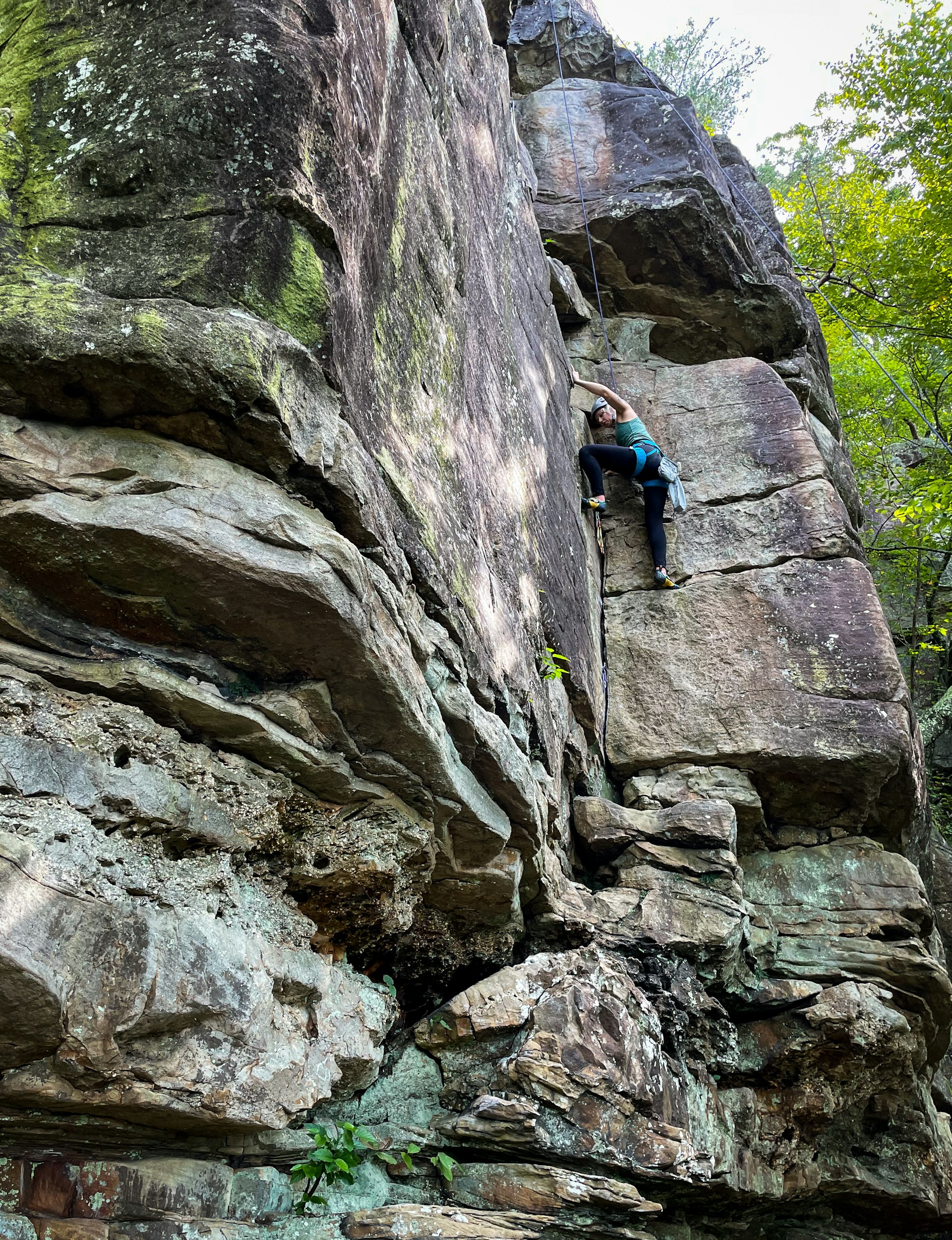
Cut to me literally quaking in my climbing shoes roughly 30 feet in the air, my panicky eyes darting around in search of something – anything – to grab.
“I just don’t understand where I’m supposed to go?!” I pleaded with my guide-slash-belay buddy. Sweat dripped down my face as I desperately sucked air, acutely aware of the strength ebbing from my body.
“Take a look to your left and see where you can find a foothold,” he coaxed. My forearms were on fire, and my voice trembled as it left my chest. “How did y’all get up here?” I whimpered.
“Let go and take a break for a second,” he amiably suggested. I looked down at him like he had suddenly grown another head. “What do you mean ‘let go’?!” I screeched. In aerial, letting go equals a rather uncomfortable death – how is that not the same in climbing?
In the end, my hands decided for me – my tenuous grip finally gave way and I swung off from the cliffside yelping a string of curses that would make a sailor proud. Then, dangling there in the late afternoon sun, I realized that I was still very much alive.
Hands still vibrating with nerves, I found my way back to the rock and, with a helpful haul from my friend below, I slowly ascended through the problem spot, eventually making my way to the top of the (modest) cliffside. Noodle-limbed and panting, I looked behind me to see the sweeping blue curve of the Tennessee River cutting through a soft blanket of greenery tinged with gold. My heart slowed and I breathed in the breeze that kissed my face – ah, there it was. The reason we do stuff like this.
That day, I learned it was okay – sometimes advantageous – to fall. In a practical sense, I learned a heck of a lot about rock climbing, but I also learned that hitting the restart button is nothing to be ashamed of. I still made it to the top, after all.
Badass lesson #2: It’s okay to suck at new things. You’ll get there.
The five best places to climb in the US southeast

Utah's desert taught me that asking for help isn't a weakness
Nothing feels quite like that moment when you realize you’re lost – it’s a one-two punch of a lump in your throat and a buzzy brain as you try and figure out 1) where you are and, 2) where you went wrong.
That feeling washed over me as I realized that the trail I had been following through the Tahoe National Forest had evaporated under my feet, leaving me marooned on a rocky outcropping next to a rushing creek bloated with snowmelt.
Full disclosure: I did not prepare for this hike. I decided to make a spur-of-the-moment stop on the way to visit a friend in Truckee, and all I did was locate the trailhead beforehand – didn’t even bother to download the trail path from my hiking app (still not sure why I made that particular mistake). It was early March and technically the offseason, so the trailhead had been stripped of all its informational flyers and maps. While that should have been enough to deter me, my confidence was bolstered by the handful of cars in the parking lot and what appeared to be a clearly marked trailhead.
I happily set out, taking deep breaths of cool air as I wound my way through patches of crusty, half-melted snow, following what I assumed to be the trail. After about twenty minutes, though, my serenity left me when the path I had been following vanished as though it had never been there at all. I stared blankly at a dead end that occurred way too soon to feel like it was truly the trail terminus. I wandered along the banks of the creek looking for a way across, but the torrent of icy water roared at an intimidating velocity, dashing any hopes of making it to the other side. Then I turned around to discover that the trail I was following may not have actually been a trail at all, the view only a confusion of shrubs and trees. Cue lumpy-buzzy feeling.
I made my way through a narrow corridor of trees, trying my best to approximate my original trajectory and fight the growing panic. I checked my phone to see if maybe I could find myself on Google Maps. No service. Thankfully, I soon spotted a smudge of snow imprinted with the exact shape of my boot – I was on the right track. I chaotically tumbled my way through the greenery until, lo and behold, I found myself at the trailhead.
You would have thought that would have been enough for me. But no, I refused to accept defeat; surely I had just made a single wrong turn and a glorious hike still awaited me. I turned on my heel and set out on the trail once more.
But I was lost...again. This time, just off kilter from my first hike. At least I had been more conscious of my directions, mentally noting landmarks in case I needed to make another return journey – which I did. I made it to the parking lot once again, but I am pretty sure my proverbial cat lost one of its nine lives in the process.
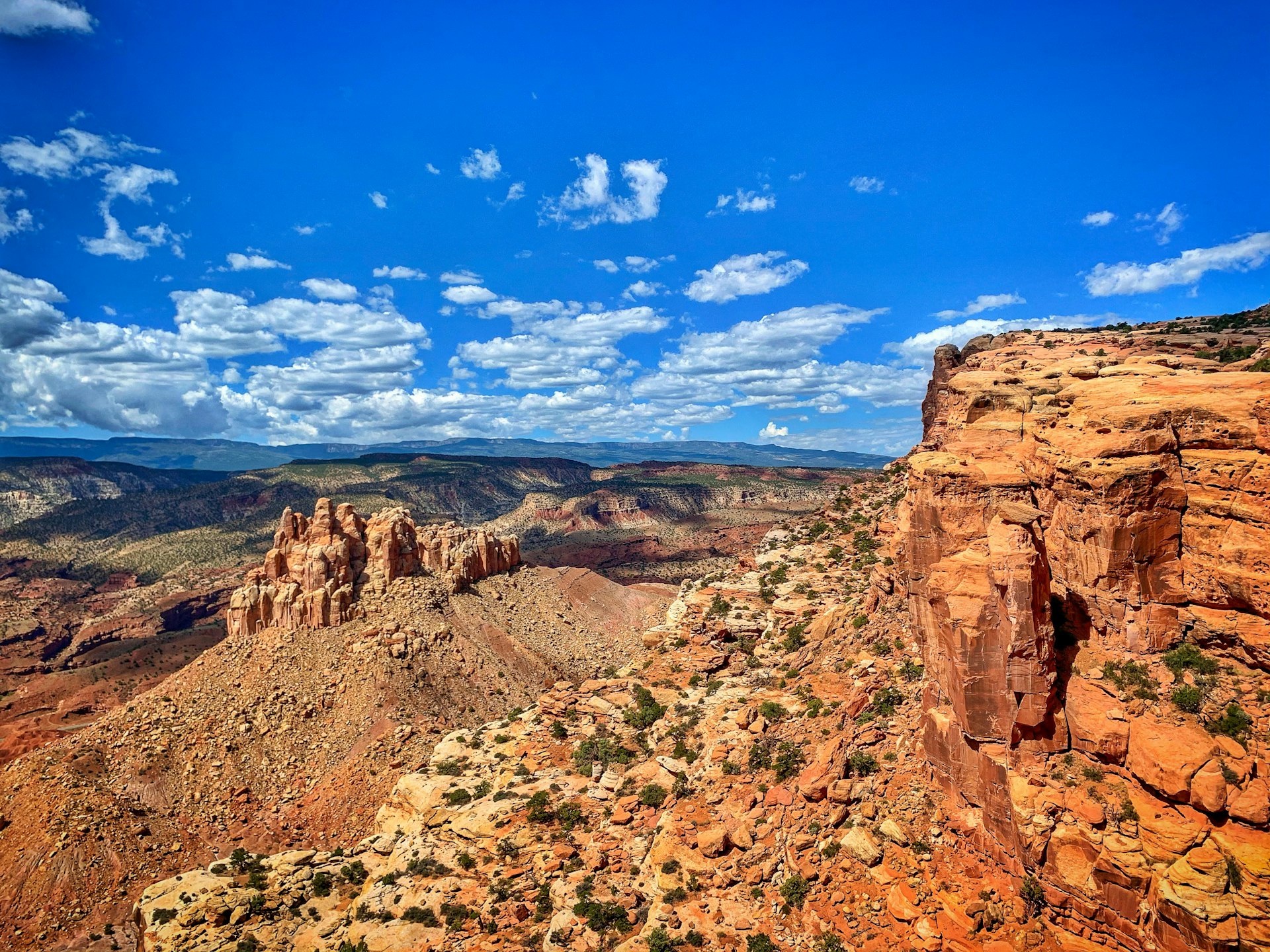
Jump several months forward to my western US road trip. I had woken with the sun to hike the spectacular ridges of Capitol Reef National Park via an 11-mile route that delivered panoramic views of red rock cliffs. Hiking in the desert is different from hiking in the woods – you leave no tracks and there's nothing to follow if you get turned around. Instead of blazes, the trail is marked with cairns of varying size and shape, some nothing more than a speck against the scrubby foreground.
Since my Tahoe hiking catastrophe, I had made some improvements to my system – paper and digital maps always, familiarity with a compass, and routine check-ins with my husband at home in Tennessee. But even with all that, it wasn’t long before the ridge I had been following gave way to a wide expanse of rock that scrambled my vision with its intricacies; I simply could not spot any cairns that looked like they were leading the way.
I was prepared to abort my mission when a couple of hikers passed me and forged ahead, looking very much like they knew where they were going. I summoned my extrovert skills and chased after them.
“Hi y’all! I’m out here doing this solo – I don’t mean to crash your hike, but is it okay if I follow you a bit until we find a clearer path?”
Turns out one of them was an Eagle Scout with a specialty in navigation and they both were keen on some new company after spending several months on the road together traveling around the country. What could have been 1) a dangerous solo hiking scenario or 2) a non-hike, turned into an amazing afternoon scrambling over Utah’s otherworldly landscape with some new friends, all because a past mistake taught me to prepare myself for bad scenarios and to recognize my limits.
Badass lesson #3: Find friends to help you through the tough spots – there's no shame in asking for help.
See the best of the Mighty Five on these top hikes in Utah

Finding my sea legs in the rapids of Oregon
It was a gorgeous day to sea-kayak along the striking southwestern Oregon coastline – we had spotted numerous tangerine- and plum-colored starfish, a mama harbor seal and her curious pup, and clusters of shy sea anemones hugging the rocky outcroppings. It was a dream for anyone who has ever wanted to see the best of the pacific northwest.
One of my colleagues snapped a picture of me as I floated past them on the emerald waves, looking out to the horizon like I was peacefully taking in the beauty around me. The reality? I was taking deep, desperate breaths trying not to hurl over the side of the kayak in front of a bunch of people I had just met.
You see, motion sickness runs in my family, a fact I like to try and ignore with various degrees of success. On this particular day, I gambled that I would be able to hold it together – and I lost. Anxious sweat glistened on my forehead as my kayak bobbed on the coming swells, my stomach flipping with each rise and fall of the boat. The guides helped me keep the sickness at bay with ginger chewing gum and pressure-point bracelets, but when it was time to go, I led the way back to the sandy beach, practically jumping out my boat to sit with my head in my hands as the earth stabilized beneath me.
In a way, the situation was depressing – exploring coastal Oregon had always been a dream of mine, and when the time came I could hardly focus on the wonderful things around me because my body wouldn’t cooperate. It’s tough to give yourself grace when you’re feeling so much FOMO.
And now the kicker: we were supposed to go whitewater kayaking the next day, another water adventure with lots of up-down motion. And while I was going to force myself to do it no matter what (because, for better or worse, I’m one of those people who would rather die than quit), I did not fancy feeling green again so soon.
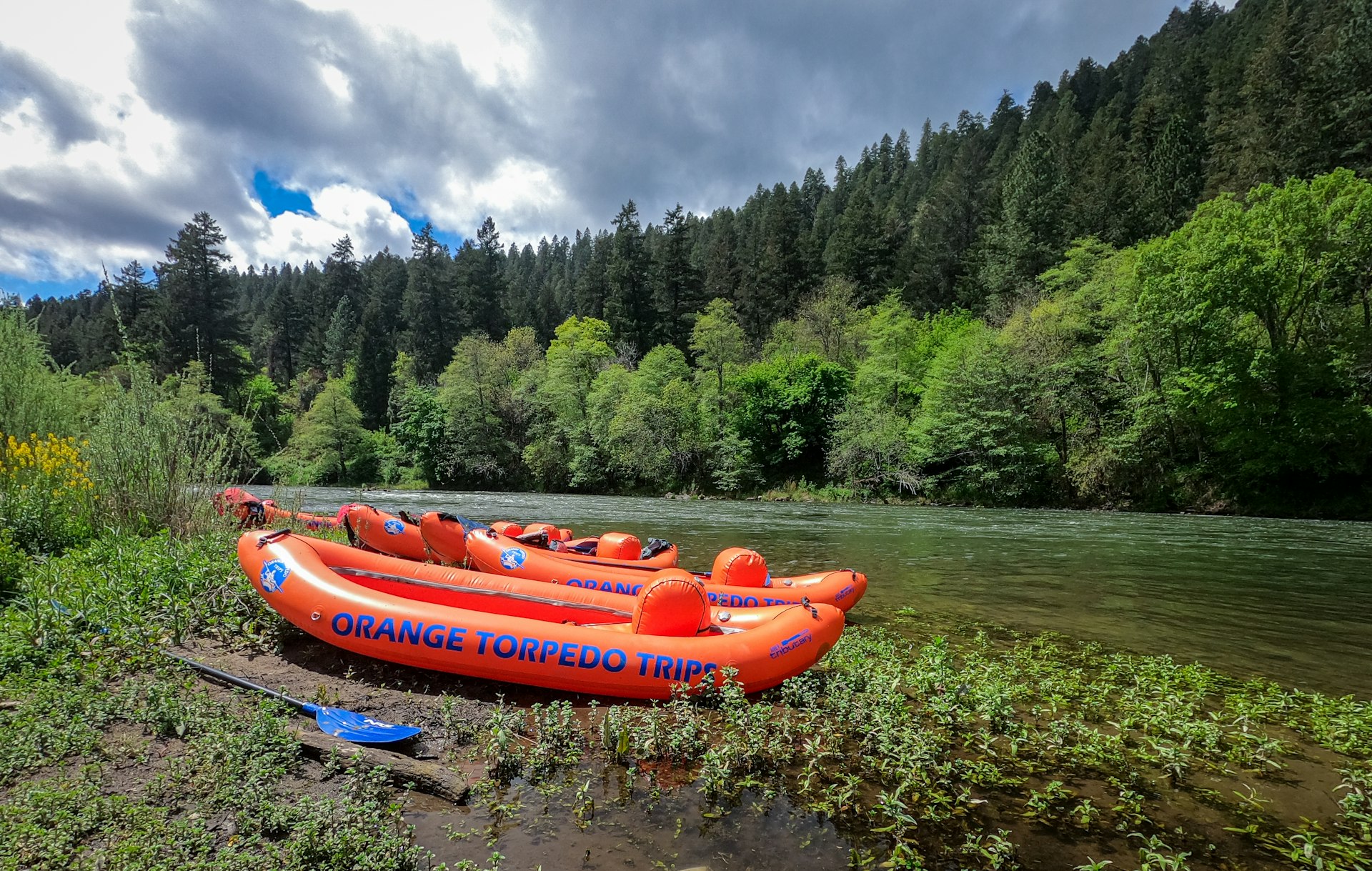
The next day we geared up and headed to the banks of the mighty Rogue River, a behemoth 215-mile-long waterway famous for its whitewater rapids. With the memory of my nauseous afternoon on the ocean still fresh in my mind, I climbed into the inflatable kayak – a first for me – almost certain I was going to end the day by either puking or falling overboard.
We started with small riffles that tickled the bottom of our boats, and from there progressed to stronger rapids, little by little. My boat bobbed, swayed and spun, but I didn’t feel an inkling of sickness, probably due to the adrenaline that comes with careening through waves. Instead, my face hurt from smiling so much, my nervous system delighting in the cool splashes on my skin and the tangible speed beneath my boat. In between the rapids, I slowly slid along the glassy water, watching ospreys and bald eagles cruise the treeline – I had never seen a bald eagle in the wild before.
I finished the trip with a flourish through a class 3 rapid, feeling invigorated and calculating in my head when I may be able to do something similar again. In the end, if I had let my anxiety get the best of me, I would have missed out on one of my favorite ever days of outdoor adventure. But the juxtaposition of experiences also showed me something else: now I can comfortably say that sea kayaking probably isn’t for me and that’s okay too.
Badass lesson #4: Try new things to discover your boundaries – and possibly your new favorite activities.
Southwest Oregon is a top road trip for outdoor adventures: here's the best route to follow

Conclusion: Get out there and try it yourself
Outdoor adventure consists of a lot of more undignified moments than the industry leads you to believe and each one puts a notch squarely in your badass belt. Experience ends up being a great teacher, so do your research and embrace the challenge, one fail at a time.

